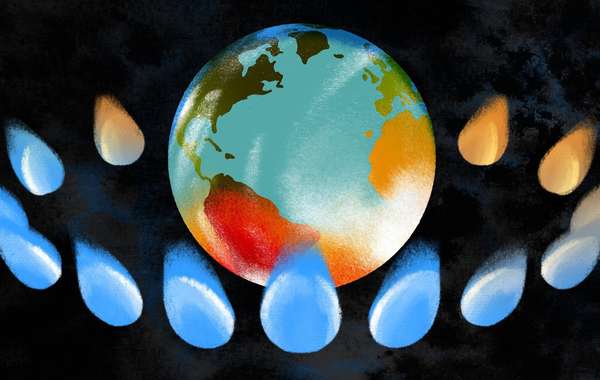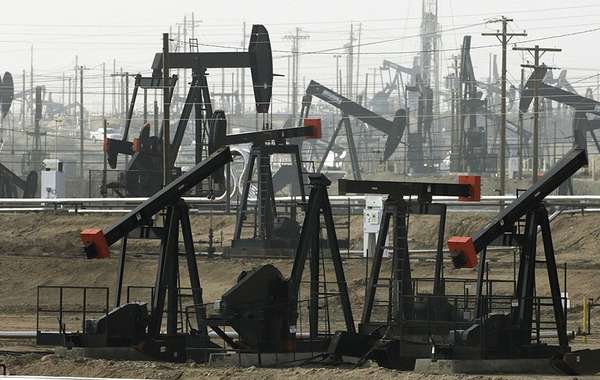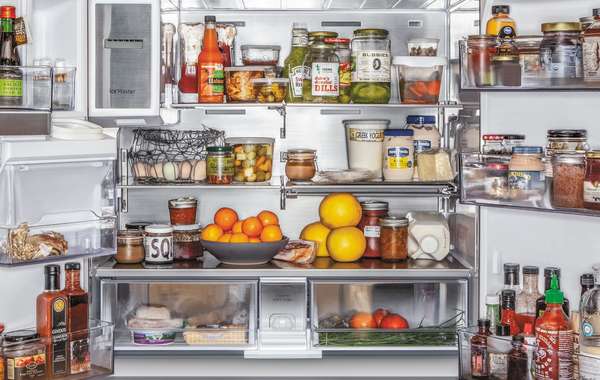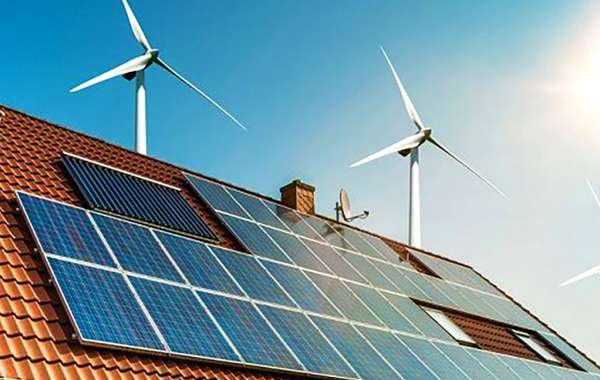Recent articles have praised major public investments in biomethanization plants around Canada and North America. These huge chemical plants produce renewable natural gas (RNG) which is a pipeline-quality gas that is fully interchangeable with conventional natural gas and so can also be used in natural gas vehicles.
RNG is essentially biogas, (the gaseous product of the decomposition of organic matter) that has been processed to specific purity standards. Like conventional fossil gas, RNG can be used as a transportation fuel in the form of compressed natural gas (CNG) or liquefied natural gas (LNG). Presented as an excellent result for the environment, on closer inspection they’ve made the Ecohome team think twice.
The problem of fossil gas and renewable natural gas (RNG) production
In 2021, our sister non profit based in Quebec, Ecohabitation, aligned with the Regroupement des Organisms Environnementaux en Énergie (ROEÉ), a collection of 40 environmental groups, to call for an end to 'natural' gas - more accurately called fossil gas - in new construction. We have since realized that renewable natural gas (RNG) production will only serve to perpetuate the myth of so called 'natural' fossil fuel gas and to prolong keeping gas in homes at all. We've also been led to ask the following question:
Is it better to produce renewable natural gas (RNG) from our kitchen waste, compost it, or simply reduce our food waste?
Four important and potentially worrisome points about renewable natural gas production in Canada and North America:
- This significant investment in biomethanization plants in the name of the environment requires maintaining the fossil gas distribution system beyond any environmentally defensible time frame.
- It also offers the opportunity to release significant and changing amounts of methane into the air via a leaky and aging (and poorly controlled) gas distribution network.
- At best, RNG will never provide more than an insignificant amount of North American energy needs - yet the damage caused by keeping the fossil fuel system running is well known and significant.
- It removes the incentive to make a concerted effort to educate Canadians and Americans on how best to minimize waste in the food chain...
To put things in perspective, let's zoom out and look at this from a global perspective: we North Americans are currently contributing via federal and municipal initiatives and funding to losing the fight against fossil fuels, which are being carefully presented as a positive asset for the environment, when in fact, it is quite the opposite.
We are open to debate on this issue (your thoughts are welcome in the comments at the bottom of the page), but we are uncomfortable with the press publishing the glossy, green-coated press releases of RNG supporters, without giving it more thought and without taking an objective, in-depth look at the potential broader implications of subsidising RNG and "greening" so called natural gas.
Back to food watse, according to RTS, "That's estimated to be 30-40 percent of the entire US food supply, and equates to 219 pounds of waste per person, per year." That's a lot, right?
Yes, SO... wouldn't it be better to compost organic waste, or reduce it at the source, in a 3RV principle, than to convert it into RNG gas? Especially to help eliminate the health risks from cooking or heating with (so called natural) fossil gas. Let's see...

What is biomethanization?
You've heard about it a few times, biomethanization is the anaerobic decomposition of organic material to recover the methane created. The methane is then industrially processed and refined to increase its calorific value - just like fossil gas products. So renewable natural gas is not as "natural" as the industry would have us believe.
Industrial methane comes from the fermentation of organic matter; table scraps, septic tank sludge, manure and wastewater are the most common sources of industrial methane in Canada and North America. This methane, or "renewable natural gas" RNG, can be injected into local networks, as is the case at La Tohu, or into fossil gas networks.
Is Biomethanization, a good or bad choice?
First, it should be remembered that RNG will at best only ever constitute a very (very!) small proportion of the gas in the networks (less than 5% by 2030, the rest being mainly gas from hydro-fracturing). Also, the environmental balance of biomethanization is much worse than composting: as much from the point of view of the quality of digestates and their final use, as from the point of view of investments (and their carbon impact) and GHGs (composting emits little or no GHGs).
Investing in biomethanization rather than in composting, or even better, in reducing food waste, seems questionable. There are more eco-friendly, reliable, and easier to scale-up avenues than biomethanization, which offers something other than a technological lock-in solution.
Since it is important, at the individual level, to think about reducing waste, we suggest effective ways to reduce your food waste at home by better organizing your fridges, and thus save many precious dollars (especially considering the rapidly increasing cost of living).
Investing in reducing food waste instead of RNG
The amount of food wasted in North America is enormous - and food waste has a significant impact on climate change. But why invest $65 million to turn all that waste into gas when so much can be done to reduce it, saving many GHGs and, more importantly, many dollars?
What impact does food waste have?
Globally, it is estimated that food waste accounts for 30% of the total food supply. This estimate suggests that the percentage of food wasted at the retail and consumer level is equivalent to about US$1 trillion (IFCO, 2020). And if this waste were a country, it would be the 3rd largest emitter of GHGs in the world (La Presse, 2021).
With 168 million tonnes of edible food wasted each year, for an estimated value of over $218 billion, North America is the champion of food waste. This is also equivalent to 170 million metric tons of CO2, or 23 million cars on the road, which contributes significantly to North America's overall carbon footprint.
And 28% of these losses are made by households (14% during production and 31% during processing, manufacturing, and distribution). On average, a North Americans household produces about 140 kilograms (or 308 pounds) of food waste per year, which costs them about $1,100. Think of the savings!
This amount of waste has considerable impacts on society, and potentially on the production of greenhouse gases such as methane:
- Food that could have helped feed families in need is now being sent to landfills.
- Landfills release methane when organic food waste decomposes.
The big problem with methane is its global warming potential (GWP). According to the Intergovernmental Panel on Climate Change (IPCC), in recent decades methane has warmed the planet up to 86 times more than CO2.
Huge amounts of arable land, water, labor, and energy are wasted to produce, process, package and transport an alarming amount of food that is simply thrown away. All this adds unnecessarily to the carbon footprint of the agricultural industry, which is growing as populations increase.

What are the targets for reducing food waste in the USA and Canada?
While the argument for GM food is mainly based on the ability to feed everyone in the future, we throw away a third of everything we produce. It seems obvious that avoiding food waste is a very good plan, and we can all do our best to help.
To limit this loss with significant climate impacts, we need to follow a certain hierarchy:
- Reduce - implement better farming practices, limited transport (eat local and seasonal).
- Reuse - donate surplus to food banks.
- Recycle - synthesize food into other products (fertilizers, cosmetics, biodiesel, compost).
Sending the food to landfill is obviously a last resort, but it is clear here that using taxpayers' money to go straight to step 3 before banking on steps 2 and 1 is inconceivable.
Especially since, let us remember, biogas or RNG leaks from the natural gas distribution system, just like regular gas. This is one of the main reasons why it's esssential for natural gas to be phased out of homes.
Now that you know that reducing food waste is much more intelligent than turning waste into problematic renewable natural gas, find more information in our pages below and in our guide to green building.
Find sustainable construction professionals and green building products as well as exemplary green home projects in our sustainable home directories - also, learn more about the benefits of a free Ecohome Network Membership here. |
Sources:
- Food waste by country: who's the biggest waster? IFCO, 2020
- Recyc-Québec, Food Waste, 2022
- Business In Review: Reducing Food Loss and Waste in Canada, Government of Canada
- Nearly 20% of the world's wasted food, La Presse, 2021
- Study of quantification of food loss and waste in Canada, Recyc-Canada, 2022
- https://www.usda.gov/media/blog/2022/01/24/food-waste-and-its-links-greenhouse-gases-and-climate-change#:~:text=EPA%20estimated%20that%20each%20year,42%20coal%2Dfired%20power%20plants.
- https://www.rts.com/resources/guides/food-waste-america/
- https://www.epa.gov/greenvehicles/greenhouse-gas-emissions-typical-passenger-vehicle
- https://www.rts.com/resources/guides/food-waste-america/#:~:text=%E2%80%A6and%20economic%20repercussions%20too&text=According%20to%20the%20nonprofit%20organization,%241%2C600%20a%20year%20in%20produce.





























I found this article most informative on whether Renewable Natural Gas (RNG) is a good or bad idea in BC?
And this article on the bigger problems behind Renewable Natural Gas (RNG) in a Canadian context as a tool for green washing fracked fossil gas.